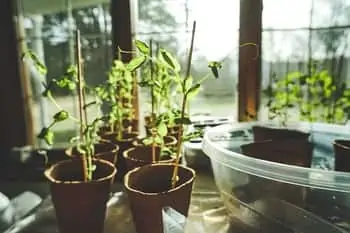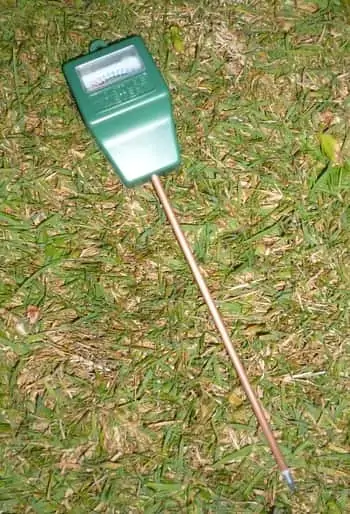Not everyone can have a yard or a garden, which is why indoor plants are the best to keep your space vibrant and green. Unlike the outdoor plants, indoor greens don’t require much space and time; instead, they are relatively less spacious and can be nurtured with just a little effort.
However, simply because you have a few pots inside your house doesn’t mean you should prioritize them any less. Indoor plants are still plants and require enough water, sun, and other care. Here’s how to keep indoor plants green and healthy with three basic steps and top ten tips and tricks!
Table of Contents
The Three-Step Guide to Healthy Indoor Plants

Many factors affect how your plants thrive and live, but before you jump to the extra care, there come the basics. So, let’s dive into the following three basic steps that will take care of the greens in your house!
Water Your Indoor Plants
As simple and easy as it seems, watering your plants regularly on time can be a big heck sometimes. Not to forget the primary reason why your indoor plants aren’t growing at their finest: irregular, non-punctual, last-minute frequent watering sessions.
Also, just like underwatering your plants destroys them, overwatering can and will do the same damage. It is exactly why you should keep track of when and how much to water; setting alarms to prioritize also helps.
Drain Your Indoor Plants
Here’s the deal: you should water your plants, but never should you let them rot in it. If you fall into the habit of overwatering your plants because “just in case,” then you should also know that proper draining is a must to keep your plants alive.
The best way to drain plants correctly is the conventional indoor method: using pots that come with hole(s) in the bottom. However, since it’s indoor watering we are talking about here, we suggest using a base plate to avoid ruining your furniture.
Give Light To Your Indoor Plants
Your indoor plants need enough water and proper drainage to transport the nutrients from roots to leaves. But sunlight is what provides them with essential nutrients in the first place. For this, you should always make sure your indoor plants are getting enough time in the sun.
The 10 Golden Tips to Keep Your Indoor Plants Green And Healthy
As different plants have different requirements and needs, trying to take care of each can seem overwhelming. However, contrary to what many people think, indoor plantations aren’t complex at all. Here are ten golden tips to keep your indoor plants green and healthy! All it takes is the proper care in the right environment, and your plants will live long and healthy.

Get the Right Pot Size:
You can turn your pale and lanky plants into vibrant, lush greens by just getting the correct pot size; the pot should have enough space to let the roots stretch and grow. Conversely, if the pot size is too small, the growth can be less than usual or no growth at all.
Know Your Plant:
You can care for your plant the right way only if you know what steps to take and where to watch out for. It includes the plant type, watering and drainage requirements, and more.
Retain Enough Moisture:
If you are conscious of providing enough moisture to your greens, you can always put pebbles, marbles, sand, or gravel at the bottom of your pot. They not only drain any excess water but also retain the moisture your plants need.
Use Coffee Filters:
Pots with holes can drain soil along with water; it can also clog the hole and make a mess. Coffee filters are an easy solution to drain the water as they keep the soil safe.
Keep the Right Temperature:
It isn’t about the sun, but the temperature of the place where you keep your plants. Too cold or too hot can wither away your greens, so try to keep the temperature somewhere between 70-80 F (day) and 65-70 F (night).
Sunlight:
Not every plant needs full sun; it depends on the type of vegetation if it needs full or partial sun or no sun at all. Also, do not leave your plants in the sun for too long, and never should you move them to the shade all of a sudden. Instead, shift their places gradually.
Check the Soil Before Watering:

Don’t just blindly water your plant; let it first dry if the soil is still wet. Or, try digging your finger into the soil and note whether it is moist or dry. If the latter is the case, water your plant!
Check the Plant’s Appearance:
To save your plant from withering away, frequently keep an eye on its appearance. Look for new leaves, shoots, and buds; note if more leaves turn brown than usual and whether the leaves are pale or healthy.
Invest in a Humidifier:
A wintery or dry atmosphere is never good for indoor plants. And at times when you are extra concerned about the proper moisture level, simply use a humidifier as it does not just raise the humidity but also balances the air circulation around your greens.
Prune Your Plants:
Keep your plants clean and in shape. It isn’t only for the looks but also for the plant health, as pruning means trimming any dead or dying leaves, branches, or twigs, making enough space for new vegetation.
Conclusion
Many factors play their role in keeping indoor plants healthy and green: water, sun, moisture, humidity, temperature, and more. But no matter what, taking care of plants is more like a responsibility you should never ignore.
Keep the habit of watering your plants enough, draining excess water while retaining enough moisture, and giving your plants the sun they need. Plus, if you plan on taking the essential care to the next level, you are welcome to invest in coffee filters, humidifiers, and great pruning tools! Apart from daily maintenance, you should learn more about your plants and their needs.
Recent Posts
Have you found yourself wondering, 'why is my bamboo growing so slow?' Despite the fact that bamboo plants are remarkably fast-growing, it can sometimes take months (or even years!) to see any signs...
Miracle-Gro is a huge help when you are trying to get decent yields out of your plants or if you want them to thrive. However, you may have noticed that a single dose of fertilizer does little to...
